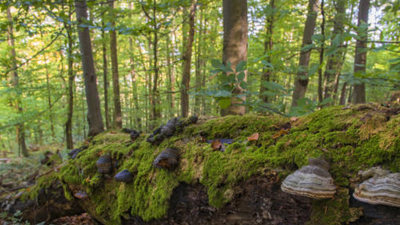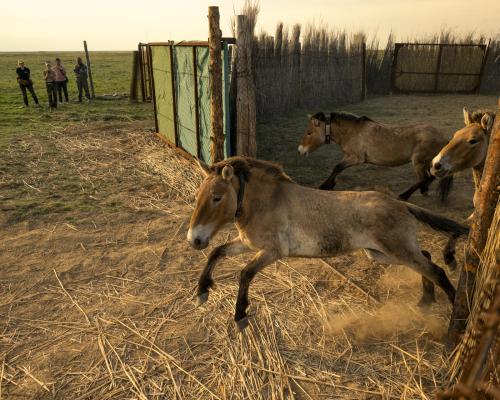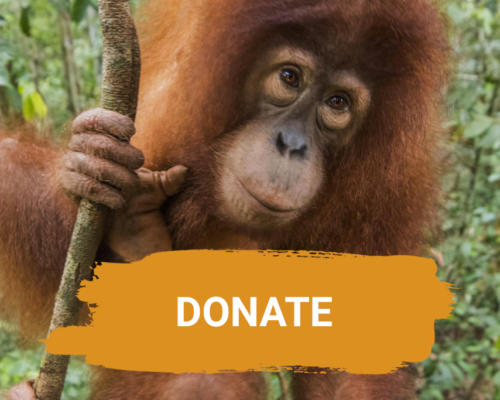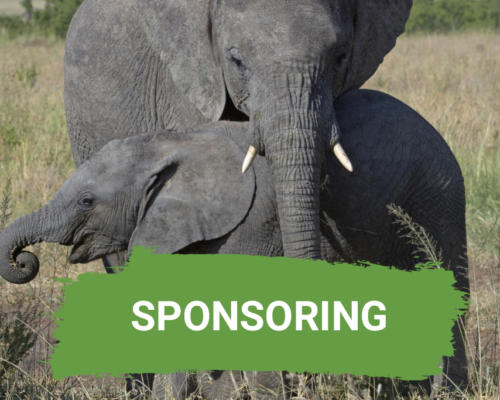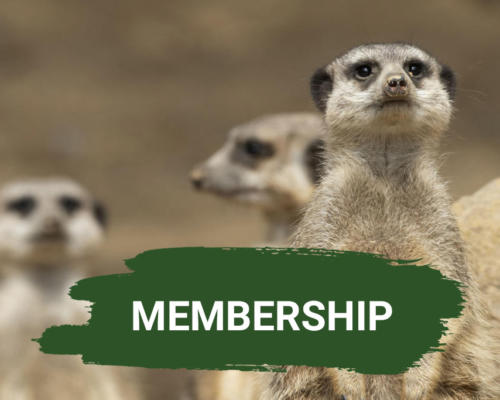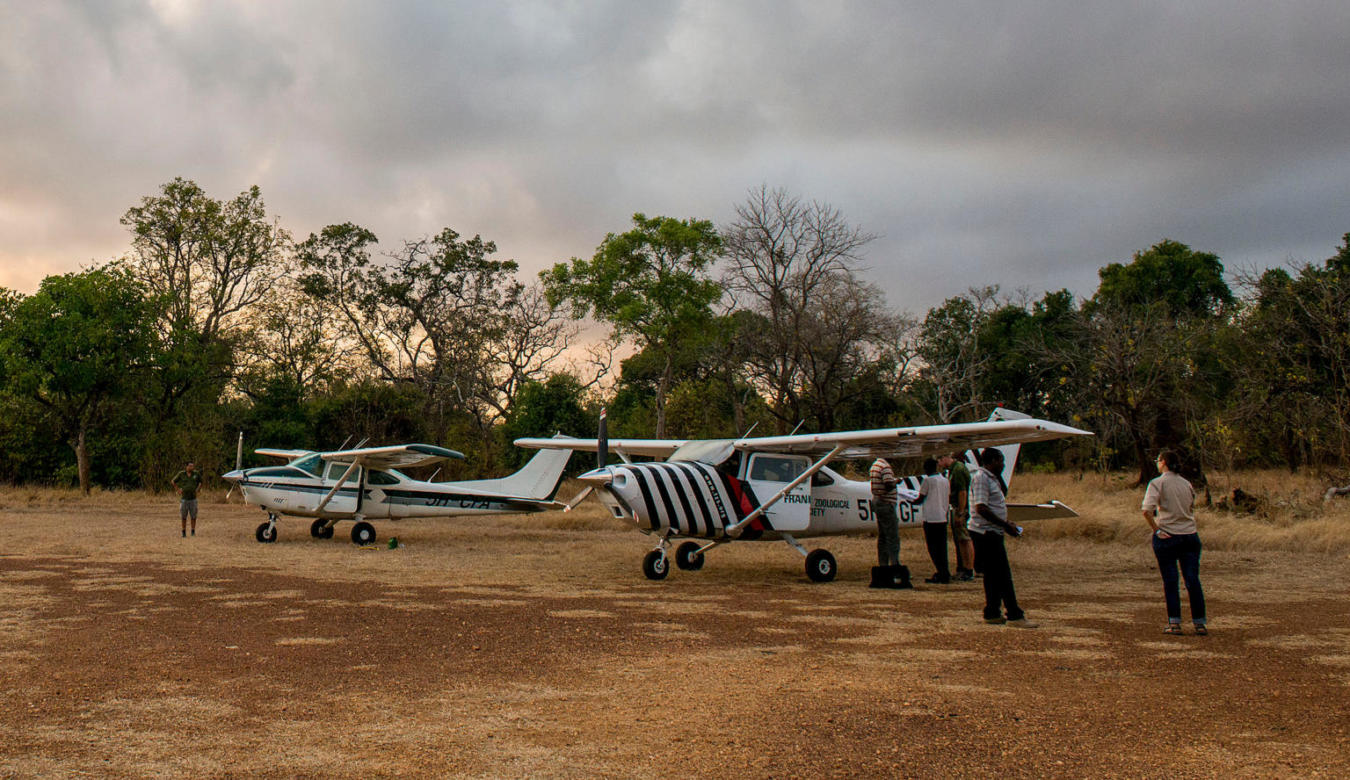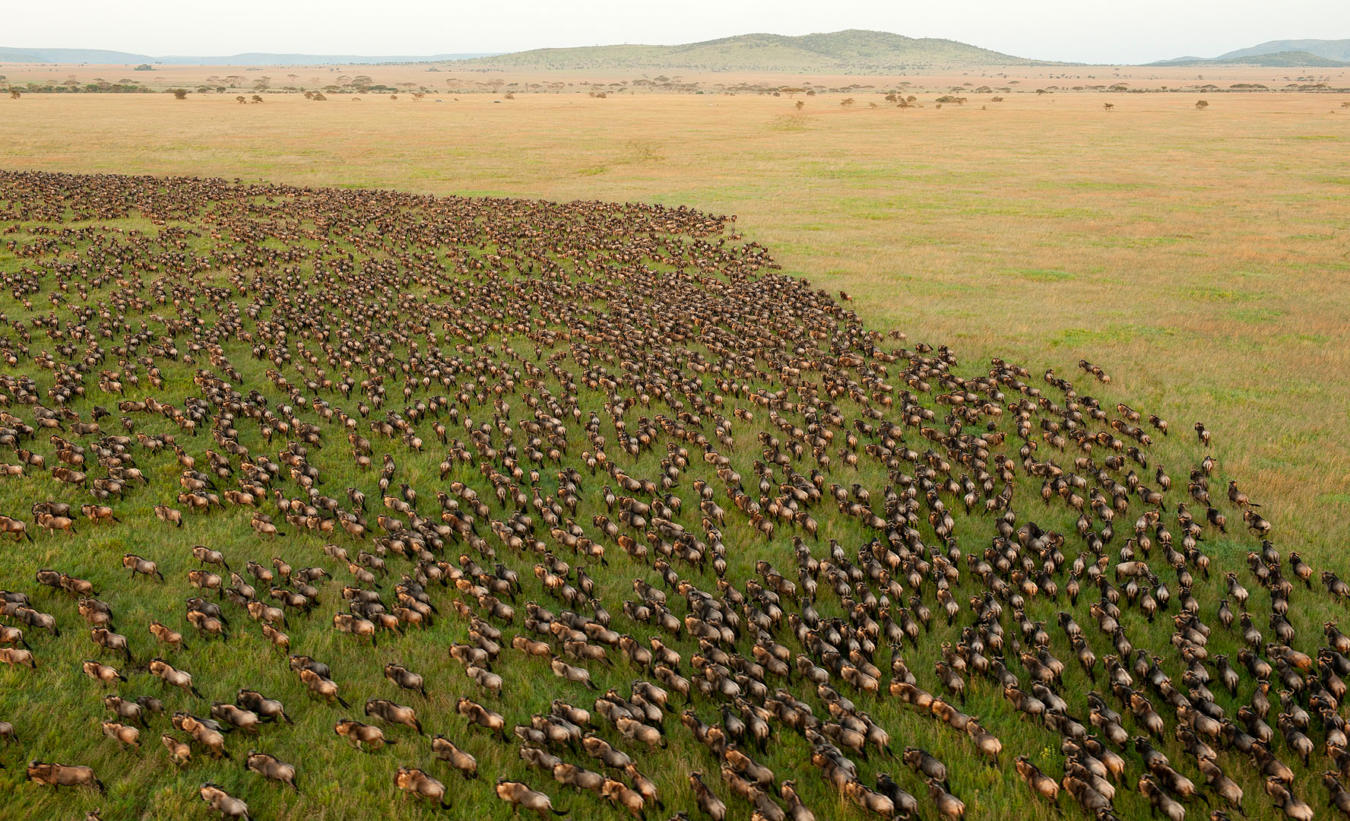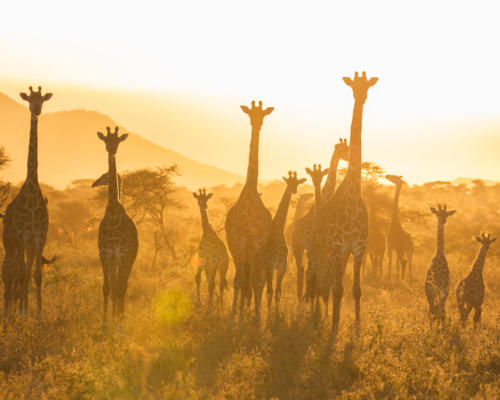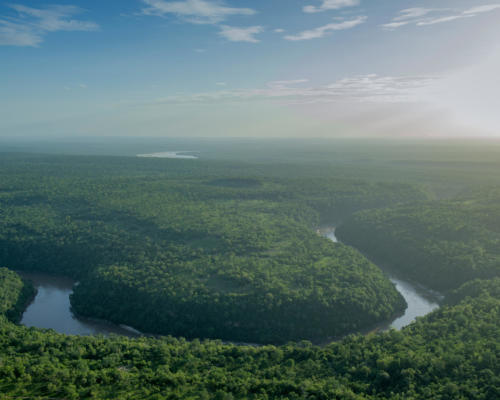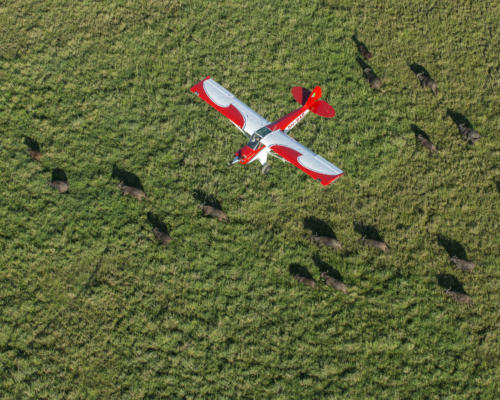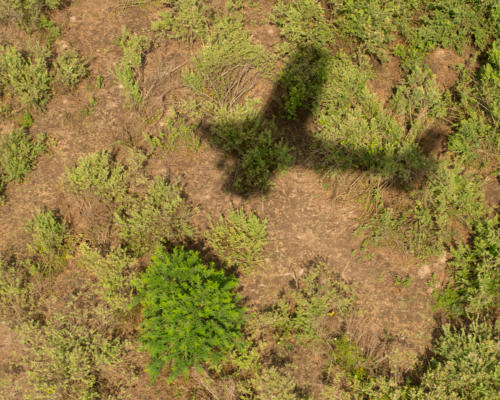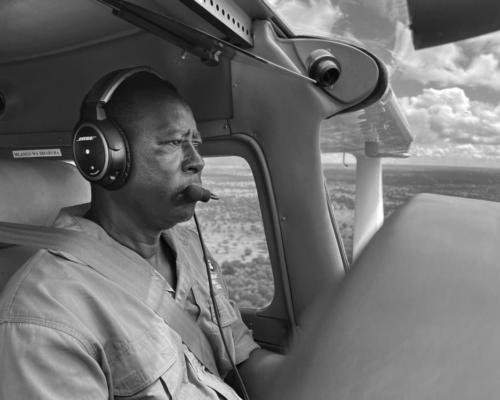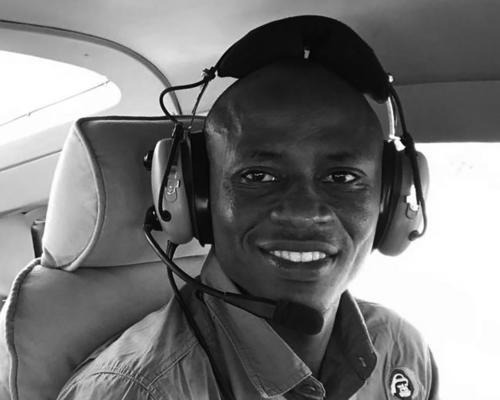Anna Laroya works for FZS partner, the Tanzania Wildlife Research Institute. She flies a plane over protected areas to do animal counts, look out for poachers, and to observe the landscape. Her job is full of risks and challenges but she loves it.
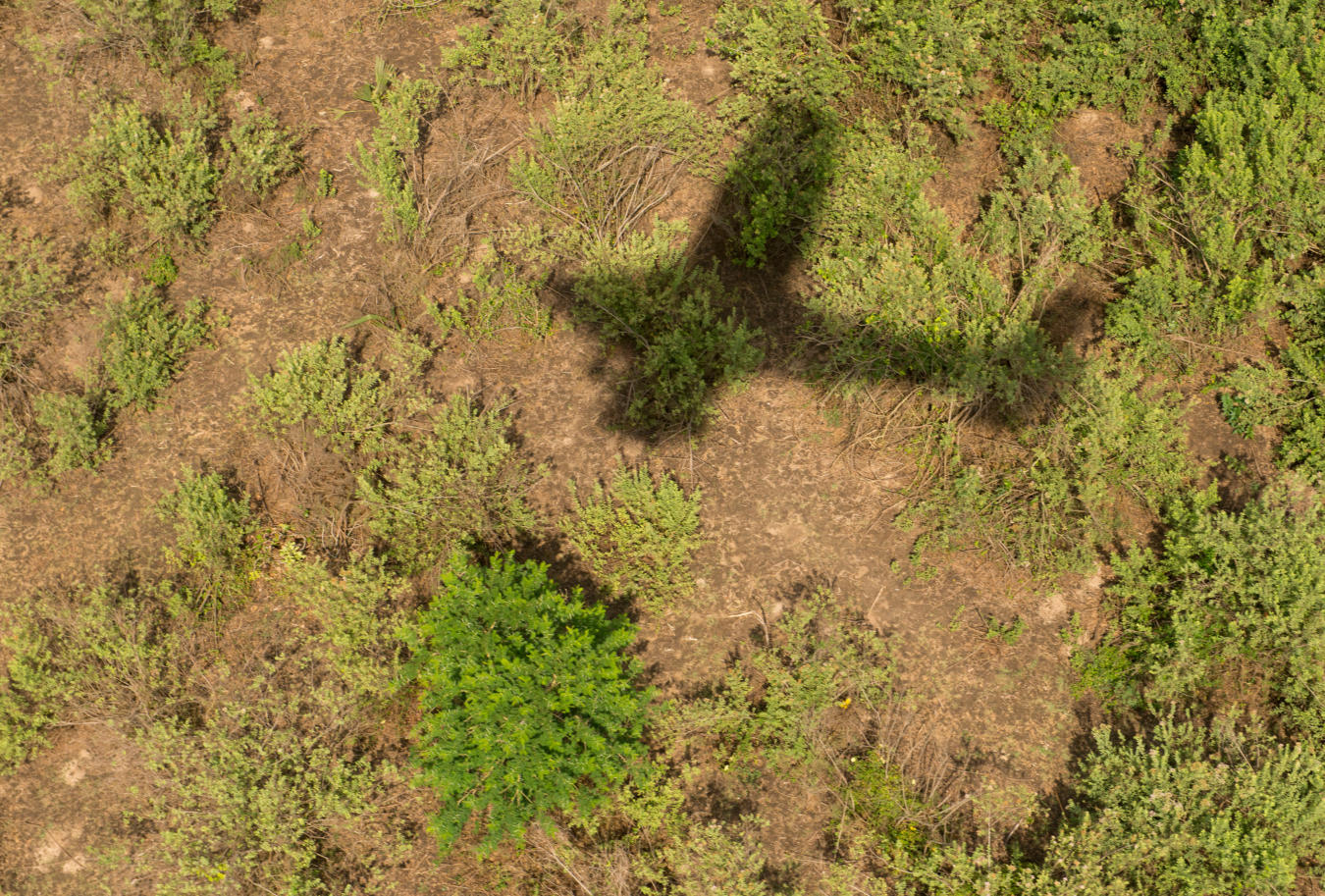
“Using airplanes gives you a good overview of the protected area.”
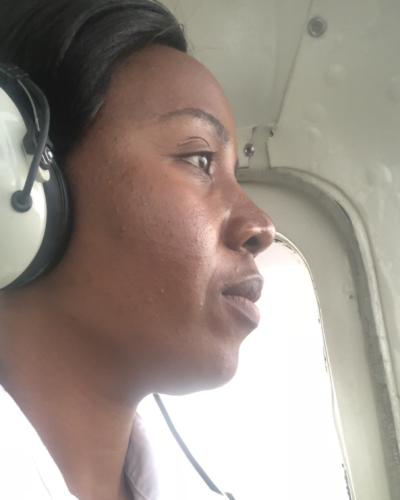
Anna Laroya has been working for the Tanzania Wildlife Research Institute (TAWIRI) for the past 10 years. She is a wife, mother of three children, and passionate conservationist. Since she was a young girl she wanted to become a pilot. A training course by TAWIRI made her dream a reality.
Anna Laroya, 40, is a wife, mother of three children and pilot. She flies a plane over protected areas in Tanzania. Planes help conservationists get a clear picture of the protected area and are great for making quick decisions. Anna tells us more:
Anna: Sure, I work for the Tanzania Wildlife Research Institute (TAWIRI). It carries out, coordinates and supervises all wildlife research in Tanzania. We work with partners such as the Frankfurt Zoological Society (FZS). FZS support us in carrying out census flights, research work and with staff training.
Anna: I have three main types of flights. The first is to conduct something called aerial censuses. These are flights where we count animals such as giraffes or wildebeest to get an approximate number of animals in the protected area. We do these about twice a year.
I also do patrol flights within the protected areas. These scheduled flights are about flying over the landscape to look for poachers.
A third type of flight is for emergencies. When our staff find an animal carcass for example, then I go investigate it. This usually means flying to the area and learning more about the problem. Sometimes it also means guiding the ground crew to the location.
Each of these flights give us a clear picture of the area. This knowledge helps us set hunting quotas. If we find poachers, then it also helps us figure out where we need more patrols.
Anna: Censuses last between two weeks and a month, depending on the size of the ecosystem surveyed, number of planes available, and the size of the crew. We usually fly four hours a day when doing censuses. Patrol flights happen three times a week. But sometimes I fly three times a day, especially if there are emergencies that need to be addressed.
Anna: Using airplanes is important in conservation because they give you a good overview of the protected area. It helps us make quick decisions and allows us to integrate the decisions right away. Pilots can quickly decide if a situation is suspicious. For example, when I see signs of poaching, or an animal that has been killed then I can contact the ground crew to take immediate action. This is better than a drone because with those you need to first download data and then can you decide if you act or not. This takes a lot of time.
Anna: If you’re out in a national park or protected area, there are no weather stations. This means that difficult weather can happen suddenly. This can be really uncomfortable. For example, in the rainy season it can start raining really hard, very suddenly. In such cases, we first have to make an intermediate landing and wait until it clears up again. Only then can we continue the mission.
When this happens, I can either do a 180 degree turn or fly low. But flying low is dangerous, I then need to concentrate very hard to not hit anything. This is also very tiring.
Also, the runways used in national parks are also visited by animals. When you take off and land there is always ground crew who encourage animals to stay away. They do this by driving cars near the runway. But landing strips are long, and sometimes when the crew start driving at one end, by the time they make it to the other end an animal appears. It happened to me before where an animal crossed my path last second. Luckily, I was able to do a premature takeoff and land right after the animal. These kinds of situations are quite risky.
It can also be hard to be away from family. Sometimes I am away for the day, but during census time I can be away for two weeks to two months, until we finish the task.
But, despite the challenges I encourage others, especially women to become pilots. There is always a way to balance family and work, this job supports us well too. Since 2009 I am the only woman doing this job here. You do have to be tough but it can be so much fun too!
Anna: Yes! I love my job because I like flying. Becoming a pilot was my childhood dream. Whenever I saw airplanes in the sky, I thought to myself: Oh, I wish I could fly, too! Fortunately, my parents made it possible for me to attend school. But it still wasn’t easy because they couldn’t financially support me to become a pilot. To overcome this, I got a degree in wildlife management and then TAWIRI hired me as a research assistant. When I heard that the institute wanted to train pilots, I didn’t hesitate for a second to apply!
Being a pilot who flies for wildlife means I integrate my two professionals at the same time. This makes my work fun and enjoyable.
Anna: Flying and conservation are still really male-dominated. But it is very important for me to motivate young women. That’s why I visit different communities here in Tanzania and tell them my story. I want to show the women that they can become anything they want in life. I tell them that it doesn’t matter what others think of them! What they think, what you can or cannot do. Your own opinion counts! And the will. Because if you believe in yourself and work hard for your goals, you will achieve them. And I tell them that flying is a lot of fun!
Thank you, Anna!


